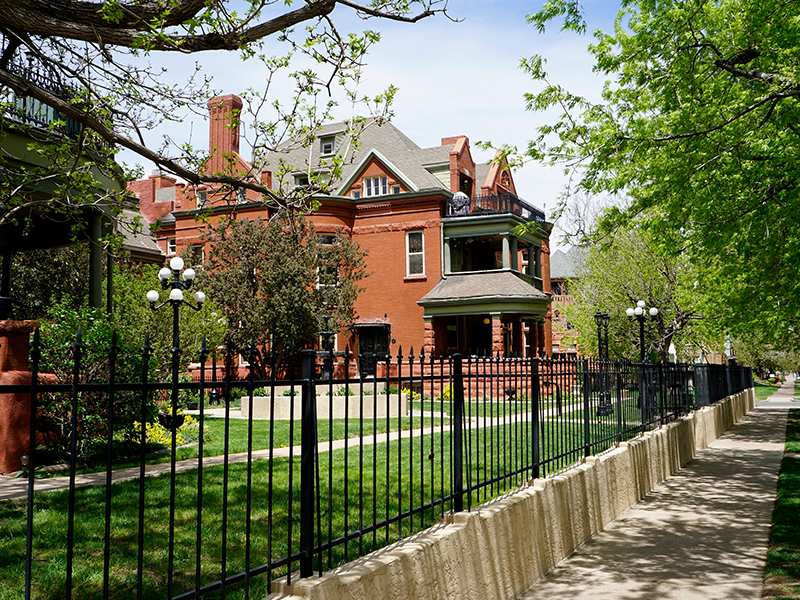
Situated at the base of the Rocky Mountains, Denver’s ski slopes and picture-perfect landscapes are top-of-mind attractions for many. But those who take a closer look at Denver will discover a wide array of historic homes scattered throughout the city. Many of those homes for sale can be found in lovely and vibrant neighborhoods, like the following:
Table of Contents:
DENVER’S HISTORIC NEIGHBORHOODS AND DISTRICTS
Capitol Hill
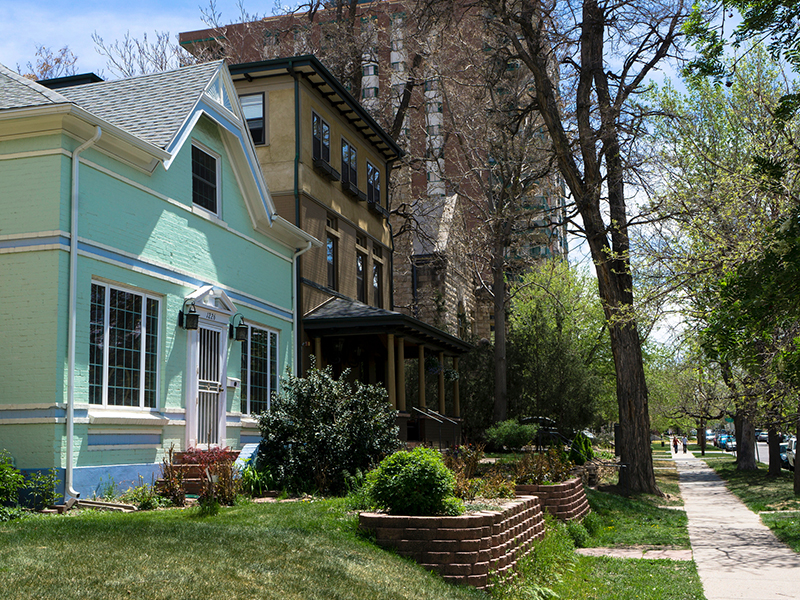
THEN:
Capitol Hill’s past is intertwined with the entire city’s history, including its most important structure: the State Capitol. By the time the Capitol was constructed in 1886, many of Denver’s wealthiest decided that the area surrounding the government building was the perfect place to put down roots. This gave birth to Capitol Hill and Millionaire’s Row, a collection of impressive Second Empire and Italianate homes along the 14th. Anybody who was anybody during the time had an address in the area.
NOW:
Today, the Capitol Hill neighborhood is the perfect balance of old and new. You’ll find century-old mansions standing alongside modern apartment buildings. Owning a historic home here means you’ll be a part of a thriving residential, government, and commercial center with a wide array of restaurants, cafes, shops, and museums.
Inquire about historic homes for sale in this neighborhood
Curtis Park
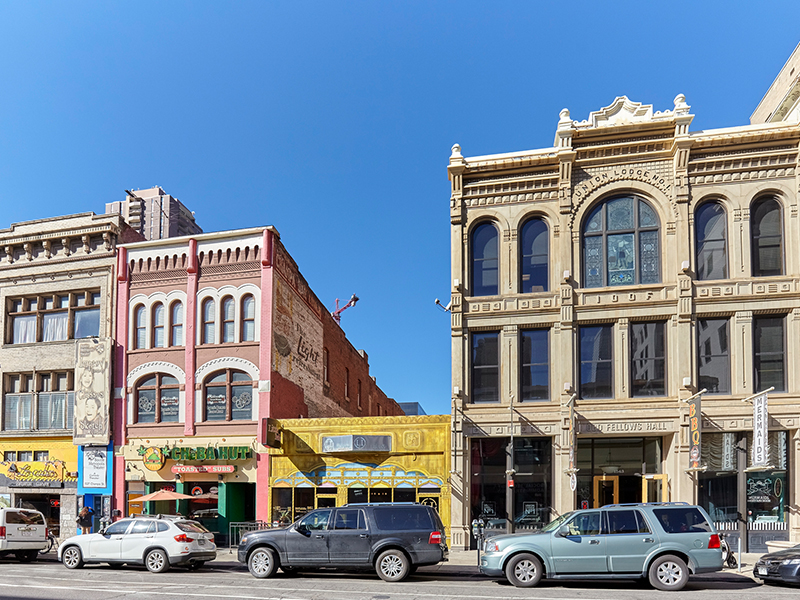
Curtis Park is Denver’s oldest district
THEN:
Located northeast of downtown Denver, Curtis Park is a historic neighborhood platted during Denver’s golden age between the years 1870-1893. It was the city’s first suburb to have a horse-drawn streetcar line. Lured by its social prestige, the population grew exponentially.
To keep up with the influx of people, the homes in Curtis Park were divided into smaller housing units. What were once single-family homes transformed into boarding houses where tenants shared bathrooms and dining areas.
NOW:
Living in a historic Curtis Park home today means finding yourself in one of Denver’s trendiest areas. Following the establishment of streetcars in 1871, the area expanded rapidly and diversified. Now, you’ll find dive bars and restaurants beside charming brick houses and elegant Victorian-style structures.
Inquire about historic homes for sale in this neighborhood
Washington Park
THEN:
This serene neighborhood got its name from its prime attraction, Washington Park, a scenic Victorian-style park that was completed in 1889. It features two gorgeous lakes, a spacious meadow, fabulous formal summer flower beds, and important architectural landmarks like the 1913 Boat House on Smith Lake. The historic homes in the area are dominated by bungalows and Victorian-style structures built during the early 1900s
NOW:
Washington Park is now referred to as Wash Park. It’s a laidback and tight-knit community with environmentally conscious residents. Boasting quiet, tree-lined streets, modern sports facilities, top-notch golf courses, and homegrown businesses, Wash Park is a convenient retreat from the bustle of downtown Denver.
Inquire about historic homes for sale in this neighborhood
NOTABLE HISTORIC HOMES IN DENVER
The most fascinating historic homes have the ability to transport you to the past. They’re witnesses to days gone by and reflect not just the history of the town or city they were built in, but also of the owners who once lived there.
Here are a few of Denver’s most iconic homes that have stood the test of time:
Capitol Hill Mansion
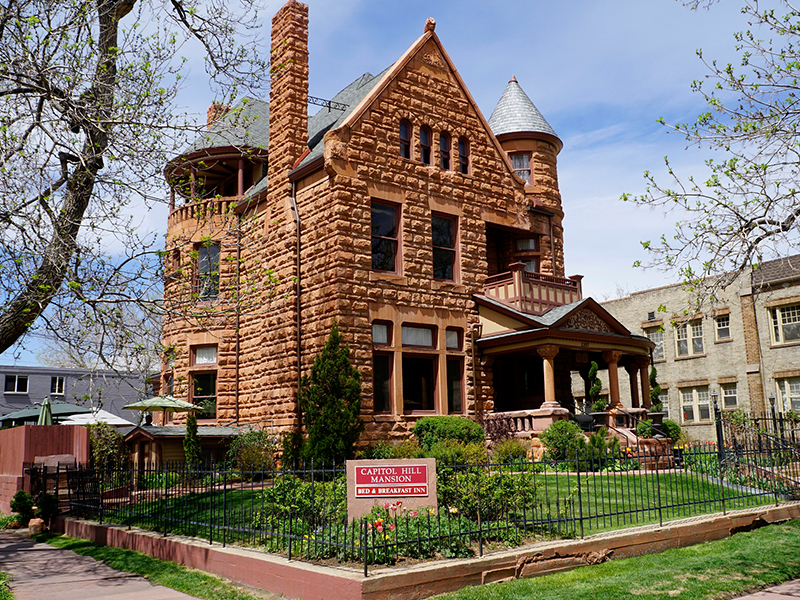
The sprawling mansion is a Richardsonian and Queen Anne-inspired residence built in 1891, one of the last grand mansions built in Capitol Hill before the Silver Crash of 1893. More than a century later, it has retained many of its original features which says a lot about how properties were built during that time.
The mansion has rugged stonework, made from square-cut Manitou sandstone. It’s a native material that has a distinct red-orange hue – a trendy look during the 1890s. Combined with Corinthian columns, stained-glass windows, intricate woodwork, and turrets, it exemplifies the exuberance of the Victorian era.
The house was originally built for the Keating family until they sold it just a couple of years later. The property changed hands multiple times through the years. For a time, it was rented out and even left vacant. Now, it’s a charming bed-and-breakfast inn that has been operating since 2001. For many, it offers a one-of-a-kind experience of what it’s like living in a historic Denver home.
Molly Brown House
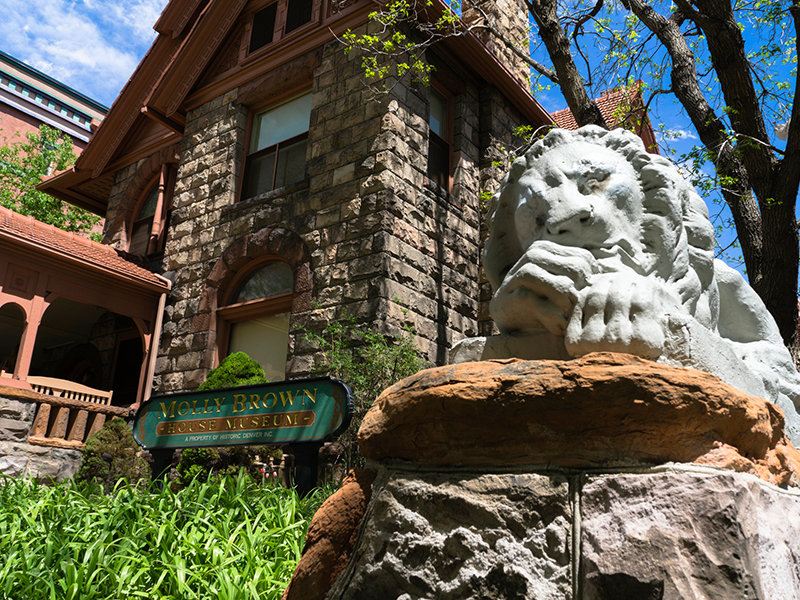
Designed by William Lang in 1886, the Molly Brown House was one of the first four homes along Pennsylvania Street. It’s a Queen Anne-style home, featuring many of the design’s classic elements including balconies, projected porches, and decorative wood panels. An assortment of intricate terra cotta lions also adorns the property, which is why it’s also called “The House of Lions.”
After the Silver Crash of 1893, it was sold to J.J. and Margaret “Molly” Brown. The latter would become famous for being a philanthropist and women’s rights activist, and for surviving the sinking of the Titanic in1912.
The Browns were frequent travelers, so the place was rented out most of the time. At one point it was the governor’s mansion. During the Great Depression, the family was forced to turn it into a boarding house under the care of their housekeeper. It was also around this time when it was sold following Molly’s death.
In 1970, it was bought by Historic Denver Inc., which turned the house into a museum filled with well-maintained artifacts from the turn of the century. Today, the Molly Brown House Museum conducts daily public tours and several events throughout the year.
Crawford Hill Mansion
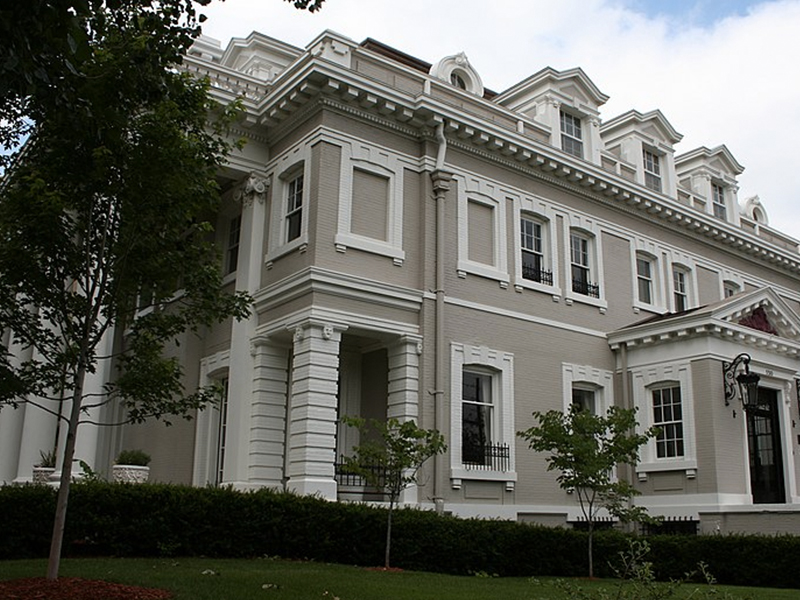
Built in 1906, the Crawford Hill Mansion stands as one of the few remaining mansions from the prestigious neighborhood once found in the Sherman-Grant District. The structure was built for newspaper magnate Crawford Hill and Louise Hill, a prominent couple in 20th-century Denver. During their heyday, the home was considered Denver’s “social capital” until it was sold in 1947.
The three-story, French Renaissance Revival-style residence is elegance personified. Outside, the house was clad in brick and stone walls with an embellished iron fence. It had symmetrical proportions, columns, rounded dormers, and arched windows. Inside, it had 23 rooms, 9 fireplaces, and an impressive, curved staircase complete with an orchestral balcony.
Today, it’s a private law office and not available for touring. That said, one can still admire its stately curb appeal and imagine how it hosted some of the city’s biggest parties.
PROS AND CONS OF OWNING A HISTORIC HOME
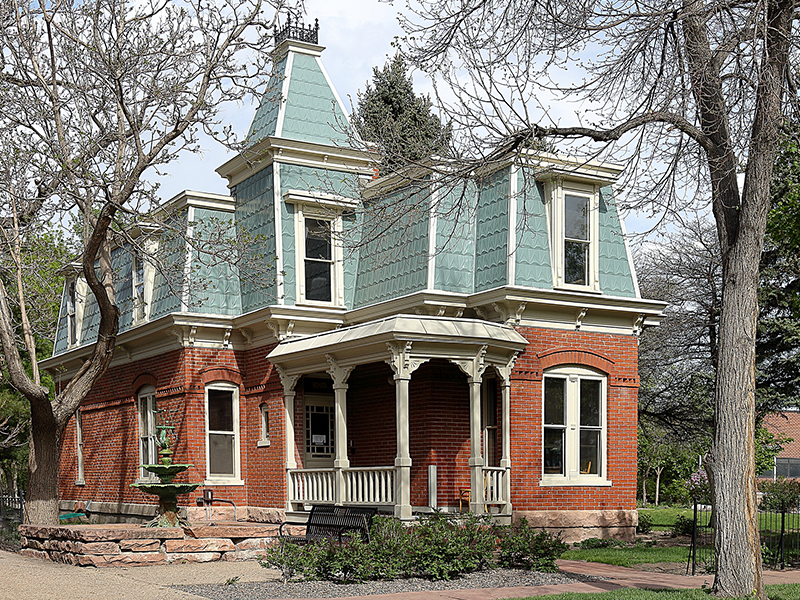
Life in the Mile High City is like no other but living in a timeless historic Denver home broadens the idea of homeownership. Buyers become custodians, preserving the past while making the home livable in the present.
Therefore, it takes commitment, a deep-rooted love of heritage, and fairly deep pockets to live in a historic home.
Like regular properties, there are pros and cons to owning a historic home. Before submitting your offer, you need to know what to expect.
Pros
- Owning a Piece of History
Denver’s historic homes represent the best architectural designs of their time. It’s true regardless of property type – whether single-family home, townhome, or stately mansion. From vintage door knockers to arched doorways, turrets, and towers, historic homes feature plenty of intricate details you won’t find in a modern house.
- Tax Benefits
Owning a historic structure entails responsibilities. To encourage people to invest in historical districts, government entities frequently offer certain tax benefits and credits. For instance, the Federal Historic Preservation Tax Incentives Program can provide a 20% tax credit to help preserve and rehabilitate properties listed in the National Register.
State and local government units also provide perks. Colorado offers from 20% to 35% state tax credits for the rehabilitation of owner-occupied historic homes. The History Colorado office lists all the requirements. It’s also the perfect opportunity to get the best recommendations on how to preserve these architectural gems.
- Robust Property Value Safeguards
Historic homes are rare, which makes them highly desirable since buyers are assured that no more of them are being made. This is particularly true if the property has other unique features. This means historical house prices can retain their value even during economic downturns and erratic market trends.
When it comes to market appreciation rates, a well-preserved historic house also tends to outpace regular properties given the right conditions. Variable factors include being in a well-maintained historical district and being in a neighborhood that is constantly being improved.
Cons
- Costly Repairs
Historic homes are like living organisms. They age, change, and present you with hidden surprises that usually entail upkeep and maintenance. Because they no longer exist, certain replacements may require custom manufacturing using period-appropriate materials.
Keep in mind that issues aren’t limited to simple plumbing and wiring. Be prepared for structural problems simply because of the age of the property. Make sure your budget for home maintenance is higher than most.
- Restricted Renovations
Even if you own the house, you can’t do whatever you want with it. Historic homes are protected by state, city, and neighborhood laws. These are strictly imposed, meaning you can’t make any significant changes without consulting the local development office and acquiring proper permits.
- Higher Home Insurance
Look for an insurance provider that specializes in these types of properties. Garden variety home insurance won’t cover the essential things historical homes need, so homeowners will have to look for other, often pricier options.
COMMON HISTORIC PROPERTY RESTRICTIONS
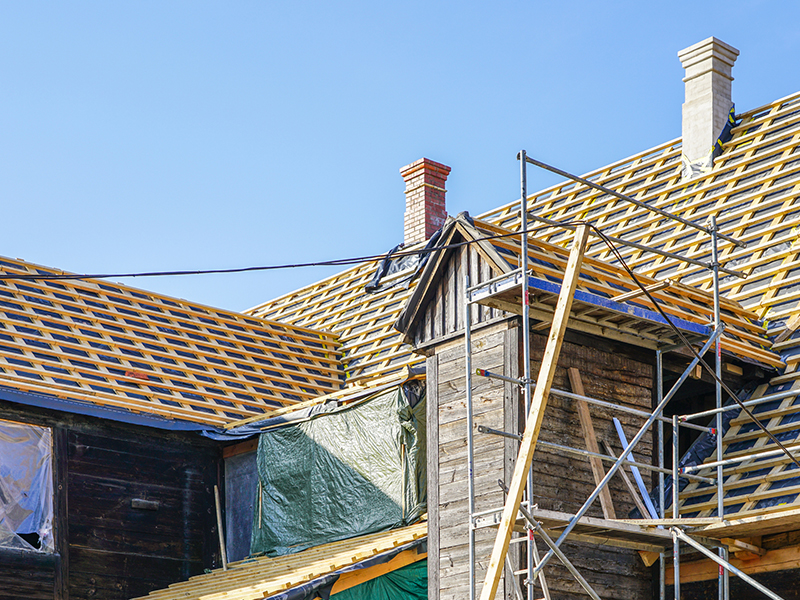
Strict regulations can be a double-edged sword: it can help maintain impressive historical house prices, but it also requires you to adhere to rigid state and local rules.
While it can be burdensome at times, the restrictions are there for a reason. Without them, a timeless and charming historic neighborhood might not be charming or historic for long. Here’s a list of the common restrictions you need to be aware of:
- You can’t expand the house.
Adding new floors and rooms to increase living space is not allowed. Expansion will ruin the character of the property and give it a false sense of history. Renovations are usually restricted to the backyard or any other part of the house that won’t alter the façade of the home.
However, new features can still be made in a way that won’t permanently affect the environment or integrity of the structure. Consult the local historical office if you’re not sure of the changes you’re about to make.
- Shutters and windows should remain as is.
While it might be tempting to replace the windows and shutters with better ones, doing so can mar the look of the home and alter its character. Keep them the way they are; they can last a long time with regular maintenance.
Should wear and tear dictate otherwise, look for historically accurate replacements with the same size, patterns, style, and material.
- Use original roofing materials to replace or repair.
Like windows, shutters, and other parts of a historic house, look for original roofing materials to repair missing tiles or shingles. If the roof needs to be replaced altogether, it may prove easier than you think. Clay tiles, slate, and wood shingles, which were popular in the past, are still available today. All that’s left is hiring a professional who can install them using the same technique as the original.
PERKS OF LIVING IN DENVER
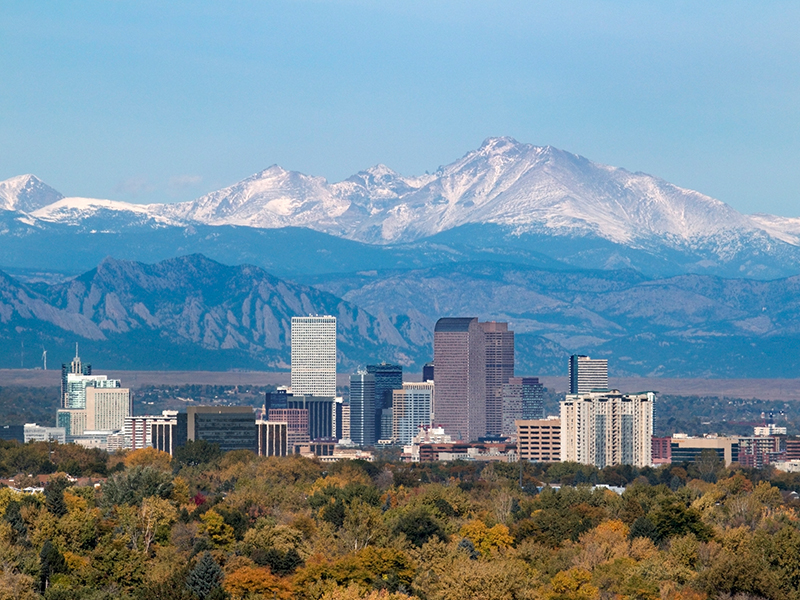
If you’re bent on buying a historic home, you might as well do it in Denver. Some cities offer access to idyllic landscapes, others provide great chances for career growth, but not all of them can offer both. However, living in a historic home in Denver, CO allows you to enjoy the best of both worlds and more. In Denver, stunning natural attractions, deep-rooted history, and big city life blissfully coexist.
Here’s why people love living in Denver:
Thriving Economy
The robust economy is one of many reasons people move to Denver.The average annual salary in Denver is around $76,000, compared to the national average of $52,132. With the city’s growth, wages are expected to increase even more.
Career opportunities exist in the defense, biotech, aerospace, healthcare, and hospitality sectors. Denver is also gradually transforming into a major tech hub. Companies like Google, Zoom, and Zero have set up shop and established their HQs in the city.
Unbeatable Outdoor Recreation
Denver is all about the great outdoors. Whatever activity you’re into, Denver has something that will appeal to you. Finding scenes of natural beauty nestled within city limits is also incredibly easy. Even the downtown area has the South Platte River and Cherry Creek where you’ll see locals enjoying picnics on the scenic banks.
Cycle across 85 miles of bike trails. Join a guided, Vespa-style scooter tour of the best sights in Denver and enjoy fascinating stories about the city.
You can also take to the water. Go kayaking in Confluence Park. Hop onto a pedal boat for a relaxing meander around Smith Lake. Snorkel alongside sharks, eels, and sea turtles at the Downtown Aquarium.
Winter destinations are also synonymous with Colorado, and with 26 ski resorts, it’s easy to see why. When you live in Denver, many of them are just a stone’s throw away.
Vibrant Art Scene
Denver isn’t only rich in history; it also has a vibrant art scene. The city has nationally acclaimed art museums, theaters, and music festivals.
Visit the Denver Art Museum, home to works of Leonardo Da Vinci, Claude Monet, and contemporary and African art. Meanwhile, Museo de Las Americas hosts exhibits of Latin American and indigenous artists.
Even just strolling around the city streets will lead you to a plethora of remarkable artwork. Most of the buildings and shops in RiNo Art District boast gorgeous murals and lifelike sculptures.
The performing arts are just as big. The Denver Performing Arts Center mounts plays, operas, and Broadway-style shows. Near Denver University, you’ll find the Newman Center for Performing Arts, home to the city’s pride, the Denver Philharmonic Orchestra.
If you’re in the market for a historic home, there’s no better place than Denver to buy one.
FIND THE PERFECT HISTORIC HOME IN DENVER
Owning a historical house comes with an important job: stewardship. Your role in conserving and maintaining the home becomes your legacy to the community. It’s more than a typical real estate transaction. For those up to the task, working with a local real estate expert that specializes in historic properties is your first step to realizing a great investment opportunity.
Allow me, Mark Muller, to guide you through the process. As a Denver resident for 30 years, I have intimate knowledge of the city, its historical neighborhoods, and the most desirable properties in the market. Along with my marketing experience, I can help you find the perfect home in Denver.
Start navigating Denver’s housing market with a trusted local agent. Get in touch with The Muller Group today. Call 303.941.6926 or contact us here.
